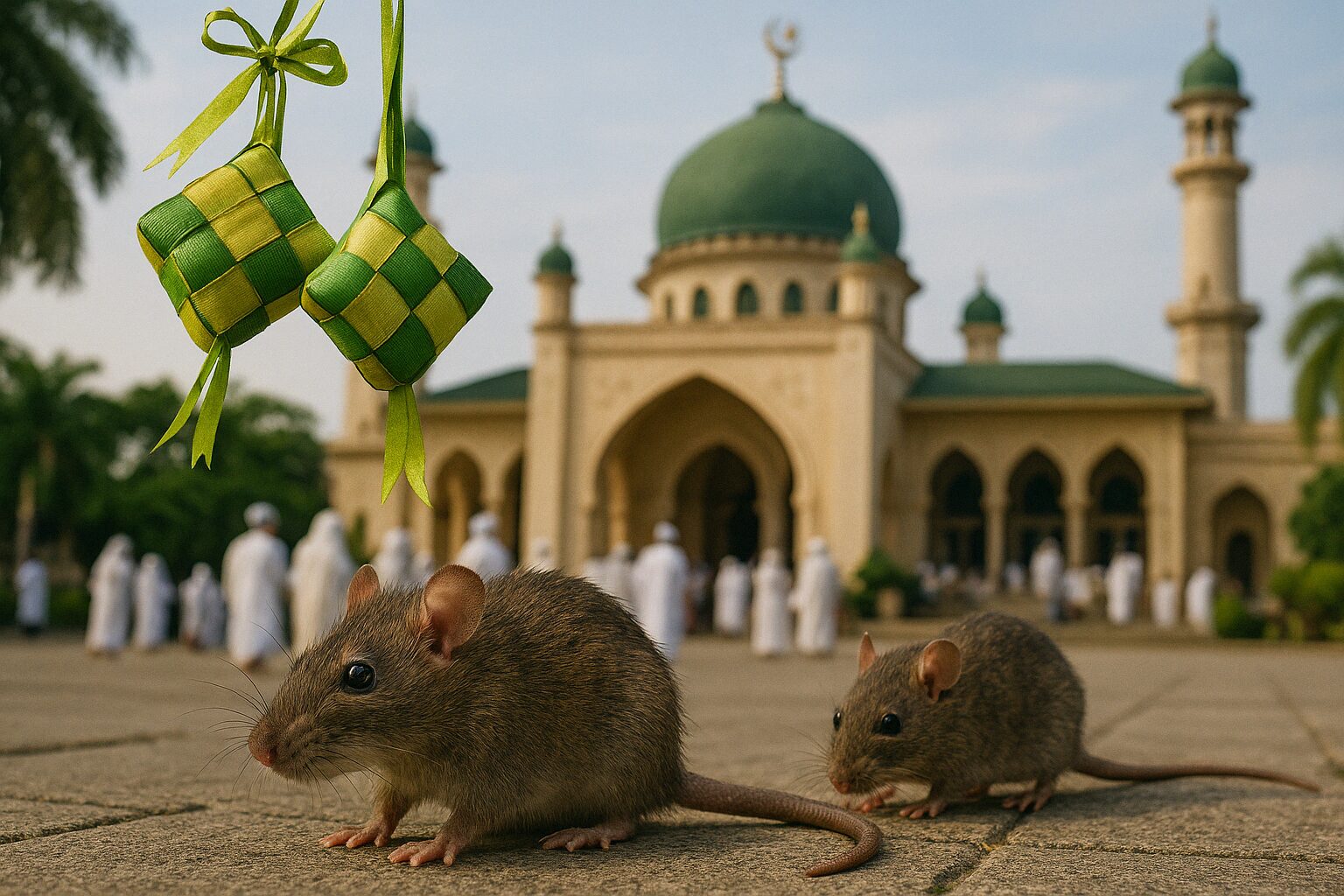
Nusantara, East Kalimantan – Online chatter about Nusantara’s rodent problem has surged dramatically following the Eid al-Fitr holiday. Since January, over 1,300 posts have discussed sightings of rats in Indonesia’s new capital, with a pronounced spike in early April correlating with viral videos and public outcry. The trend reveals how a local pest issue quickly became a national talking point, forcing authorities to respond with emergency measures to protect the city’s image.

Figure 1: Daily Mentions of the “Nusantara Rat” Issue (7-Day Moving Average)
The 7-day moving average of daily mentions about Nusantara’s “rat issue” has climbed steeply over the past few months, peaking in early April 2025. Conversation levels were low through January and February (often under 5 mentions per day), then began a steady uptick in March. During the Eid al-Fitr holiday period in early April, mention volume surged – jumping to roughly six times the January rate as the rat sightings went viral. This culminated in the highest buzz on April 7, when daily posts reached the mid-60s (versus single digits in January). In total, 1,315 posts have referenced Nusantara’s rat problem since the start of the year, underscoring how a once-minor issue gained nationwide attention.

Figure 2: Sentiment Breakdown of “Nusantara Rat” Mentions (7-Day Average)
Neutral discussion (gray area) accounted for the bulk of the discussion, as many posts simply reported the facts of the infestation. However, negative sentiment (red area) – reflecting public anger and disgust – also rose sharply during the peak in early April. Negative mentions climbed from near zero in January to around 10 per day at the height of the scare, comprising roughly 15% of total mentions at peak. This indicates that while most were sharing news updates, a significant minority voiced complaints about the situation. Positive sentiment (green area) remained scarce throughout, with only a handful of upbeat comments (for example, praising the swift response by authorities). Overall, the conversation was dominated by neutral reporting, but the uptick in negative tone signaled genuine public concern as the story unfolded.
The social discussion spike in early April was directly triggered by events over the Eid al-Fitr holiday weekend. During the long weekend, tens of thousands of holiday travelers poured into Nusantara to see the progress of the new capital – and many were met with unwelcome rodent sightings. Visitors reported rats scurrying around the Central Government Core Area (KIPP) of the city, a zone housing key government buildings. Amateur videos of these rats running among crowds quickly spread on social media, rapidly amassing views telegrafi.com. In one clip shared widely, a rat darted through a public plaza full of tourists. The shocking visuals went viral, and by April 6–7 Nusantara’s “rat attack” had become a trending topic nationwide. Some tourists openly complained that the rodent infestation was “mengganggu kenyamanan” – disturbing their comfort while visiting the capital. The public embarrassment for Nusantara was palpable as commentators questioned how a brand-new “smart city” could suffer such a basic sanitation lapse.
City officials reacted quickly as the outcry grew. The Nusantara Capital Authority (OIKN) announced emergency pest control measures – deploying hundreds of rat traps and boosting clean-up crews – to tame the infestation. “We are not sitting idly by. Our health and community teams are already working on this,” assured Thomas Umbu Pati Tena, the Authority’s Deputy of Development Control. He noted that Nusantara’s location was once dense jungle with many rodent nesting grounds, implying the surge in rats was an unforeseen consequence of the rapid development. In addition to traps, crews scattered rodenticide and stepped up garbage collection, as officials blamed littering by visitors for exacerbating the pest problem. The swift response aimed to halt the infestation “before they begin to erode the city’s ambitions to be a high-tech green capital”.
Implications for Nusantara’s Reputation: The rodent scare – and the viral buzz it generated – poses a reputational test for Nusantara as it transitions from construction site to livable city. The new capital has been globally promoted as a “smart and sustainable” city built to escape Jakarta’s urban woes. Images of rats overrunning public areas risk undercutting that message, if not swiftly managed. On the bright side, the episode has prompted a proactive response that may reassure the public (and potential investors) that Nusantara’s authorities can tackle unforeseen challenges. However, it also highlights the scrutiny Nusantara faces: every misstep can quickly become Internet fodder. Moving forward, officials are likely to double down on sanitation and urban planning measures to prevent further incidents. The hope is that Nusantara can turn this brief wave of negative publicity into a learning experience – strengthening its infrastructure and public services – so that the city’s narrative returns to one of optimism and innovation, rather than rats and virality.
